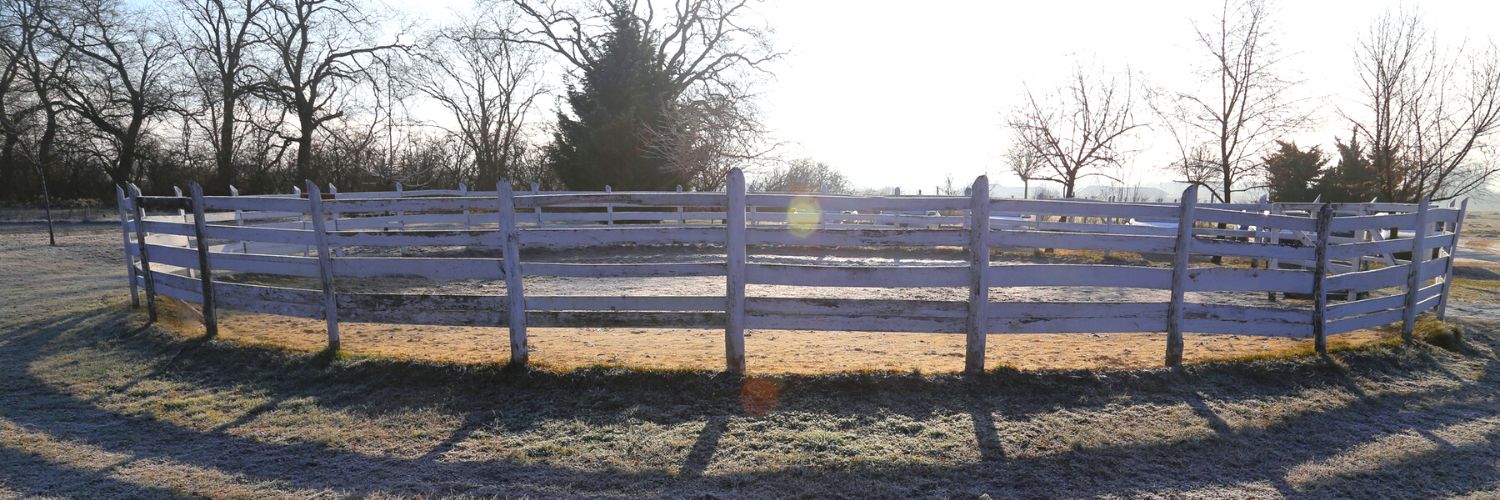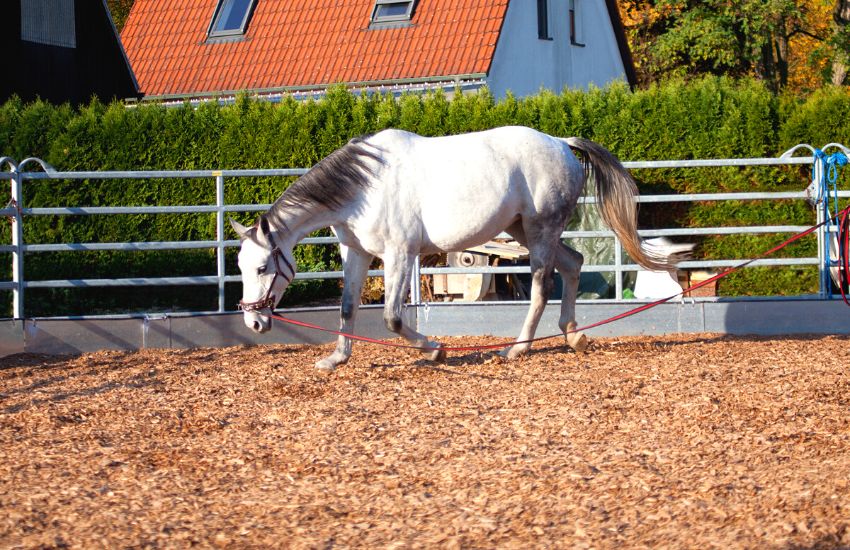shelter pets in need
Each order helps pets in need

There's a large debate as to what is the best horse
Horse pens are essential for training; they help horses improve their attention span and have marked benefits on their cadence and balance.
Round pens also facilitate a better relationship between the horse and its trainer because the enclosed nature of the pen gives the trainer the horse's undivided attention.
There are many different types of round pens, from an open enclosures for domesticated horses to solid-lumber bullpens for horses that are wild or simply in need of more training.
Horse round pens typically range from 30 to 100 feet in diameter, though most horse trainers and riders typically encounter models that are 50 feet in diameter.
The inventor of the Noavel headstall, Rick Wheat, often uses a 30-foot pen to train horses. While some argue that it’s too small a size round pen to start out with, others note that Wheat has had a considerable measure of success.
Does this mean that you need to be working in a 30-foot pen, even with larger breeds, to ensure results?
In some instances, the size of the horse that would be using the pen should be the major criterion for determining the pen’s diameter.
A Clydesdale or any other horse over 15 hands would probably not suit a smaller round pen if intensive training and handling are needed, while a Welsh pony might struggle to learn about cantering and pace if it's in a pen that’s too large.
A huge horse would be better suited in a 60 feet round pen if you plan to ride at a lope or canter, while a wild horse or high-spirited horse would operate better in a 40 or 50 feet circular enclosure.
You also need to make sure that the walls of the pen are high enough to discourage new horses from trying to escape.
Consider getting an even larger pen if the horses that'll be using the round pen are larger.

It's always a good idea to think about what you want your horse to get out of the round pen sessions; this helps determine an appropriately-sized training venue that might suit that purpose.
Perhaps you have a colt you'd like to train up or do groundwork with. A pen that has a 40 or 50-foot diameter might be adequate. If your horse is going to do arena work, a 90 or 100-foot pen will provide you with the space you need.
A younger horse will respond better to round pen sessions with provisions for the gradual increase of the pen’s diameter over time; this helps build their stamina.
A larger pen might be more appropriate in building the horse's stamina as it provides enough room to move, but that would require you to be in good shape yourself in order to be able to keep up with them!
Older horses can feel the stress of round pen work in their joints and ligaments. You might want to use a smaller pen and limit their time in training.
The size of a round pen you need depends on the breed, age, and number of horses you plan to work in it.
For smaller horses like miniature horses, small ponies or younger foals, a smaller pen of at least 30 to 50 feet in diameter should work well. This provides enough space for basic lunging, groundwork, and exercise while still being easy to fence in and maneuver around.
A smaller pen may require sturdier fencing like pipe or wood to prevent escape by agile little horses.
The most common
For young or green horses, start with a smaller pen (around 50 feet) and work your way up as the horse gains experience.
Big horses require bigger spaces. For draft breeds, warmbloods, and larger sport horses, a pen of at least 60 to 100 feet in diameter is good. This size gives them adequate space to move freely and work comfortably for exercise and training.
Very large round pens (over 100 feet) can be difficult for a single handler to work in and may require assistance. If working alone, stick to a maximum of 80 to 100 feet for easier handling and control of the horse.
In the end, choose a

Your relationship with your horses is unique to you; why should your pen be any different? If your horse's attention needs to be worked on, a smaller pen might help provide more focus during training.
If you want to work on other issues like balance, cadence, and rollbacks, try a larger pen to give you a bit more space. You might find that the question has as many answers as there are horse trainers.
Found this article informative? why don’t you find out what the right stall size for your horse should be or learn how to tack up a horse.
In any case, your next training session is sure to bring promising results showing up with any of our horse shirts that speak of your love for your equines.
If you sometimes tell yourself, "Wow, horses make me happy!" then you might enjoy our articles about horses here.
Typically, wood shavings are placed on top of a base layer of gravel for horse pen footing.
Yes. A good round pen might be pricey, but it can also be a great investment with a variety of applications, including training and working green horses, letting trained horses run free and exercising them, and even providing limited turnout or pony rides for non-horsey friends.
A horse that is regarded safe to ride and exhibits all of his fundamental manners is given the term "broke." Broke horses ought to be sensitive to their riders and reasonably well-trained.
Comments
Leave a comment